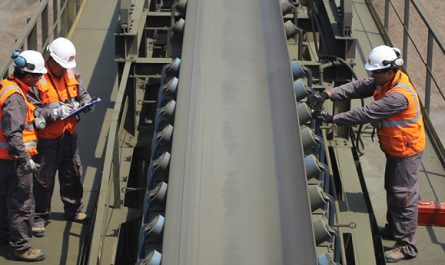Data Collection and Integration
One of the key aspects of a digital oilfield is utilizing real-time data collection from across the operations to gain valuable insights. Modern oilfield operations generate enormous amounts of data from a wide variety of sources such as wellheads, pumps, pipelines, machinery, and more. Traditionally, this data was siloed and not integrated between systems. However, with digital technologies it is now possible to aggregating data streams from Internet of Things (IoT) sensors and equipment to provide a comprehensive view of the entire asset portfolio. By integrating structured and unstructured data onto a single platform, operators can more easily monitor, analyze and extract useful information. This improves visibility across fields and enables optimization of production processes.
Automation and Control Systems
Another crucial element is implementing automated control systems to oversee operations remotely. Previously, human intervention was required for monitoring and adjusting thousands of parameters. Digital Oilfield Now digital technologies allow building virtual models of oilfields that provide real-time operational awareness without needing constant on-site human presence. Sophisticated automation and Supervisory Control and Data Acquisition (SCADA) systems take input from various sensors to make adjustments remotely as per pre-defined parameters. This optimizes processes such as extraction rates, production allocation, machinery operations according to dynamic reservoir and market conditions. Moreover, advanced automation also aids in detecting potential issues early to prevent unplanned downtime and safety hazards.
Predictive Maintenance Through Data Analytics
The data collected across an entire oilfield generates valuable insights through applications of predictive analytics. Using techniques such as machine learning and artificial intelligence, it is possible to identify patterns and anomalies within large datasets to predict future outcomes. In the context of digital oilfield operations, this enables moving from reactive to predictive maintenance strategies. By monitoring equipment health patterns over time, analytics can detect early signs of potential failure or underperformance. As a result, maintenance work can be planned proactively instead of waiting for breakdowns. This significantly reduces unplanned stoppages and increases asset availability and reliability. Predictive maintenance also optimizes spare part inventory and service schedules more efficiently.
Optimized Well Planning and Delivery
Digital technologies are transforming various phases of new well planning and execution as well. Integrating subsurface reservoir data with drilling parameters allows building accurate 3D digital twins and simulations of proposed wellbores. This aids in optimization of crucial factors like well placement, trajectory, casing design well ahead of spudding. During drilling operations, automated rig systems provide real-time drilling diagnostics. Using analytical models and AI, drill pipe stresses, vibration issues formation pressures can be monitored for making hydraulic operations and casing running more effective. Furthermore, remote sensors help improve evaluation of downhole conditions for timely well control decisions. The digitally enhanced process overall enhances well delivery safety, efficiency and success rates.
Workforce Optimization and Training
A significant portion of digital oilfield workforce is involved in safety-critical roles that require specialized skills through extensive training and certifications. However, deploying people and equipment for training purposes results in productivity losses. Digital technologies address this challenge by enabling virtual and augmented reality-based immersive simulations. Remote operators can learn complex operational procedures and handle realistic emergency scenarios from the convenience of training facilities. This optimal approach improves competency development while minimizing training costs and fieldwork interruptions. Furthermore, digital tools also aid assessing technical and HSE performance more objectively for planning continual workforce development programs more efficiently.
Cybersecurity Framework
As oilfield operations become increasingly digitalized and interconnected, maintaining robust cybersecurity is imperative. The combination of operational technology networks controlling field equipment and information technology infrastructure poses unique challenges. A comprehensive security program is required that includes policies, tools and protocols for vulnerability assessment, access controls segmented networks, application controls and timely patching. Moreover, personnel training on security best practices also plays a key role. Implementing defense-in-depth architecture, continuous monitoring for threats and response plan testing enhances protection against advanced cyber attacks targeting sensitive production and safety data. A robust governance framework helsps digital oilfields realize benefits of digitization securely and compliantly.
the digital oilfield concept leverages technologies across various functions from reservoir characterization to production monitoring for taking optimization to the next level. By integrating formerly siloed systems onto a common infrastructure, operators gain unprecedented visibility and control. Advanced analytics extract actionable insights from massive data volumes for improving processes continuously. Automation enhances efficiency while reducing human intervention risks. Focus on cybersecurity ensures benefits of connectivity and smarter operations are achieved securely. Overall, digital solutions are helping operators achieve step-change enhancements in safety, productivity and long-term asset sustainability.
*Note:
1.Source: Coherent Market Insights, Public sources, Desk research
2.We have leveraged AI tools to mine information and compile it



